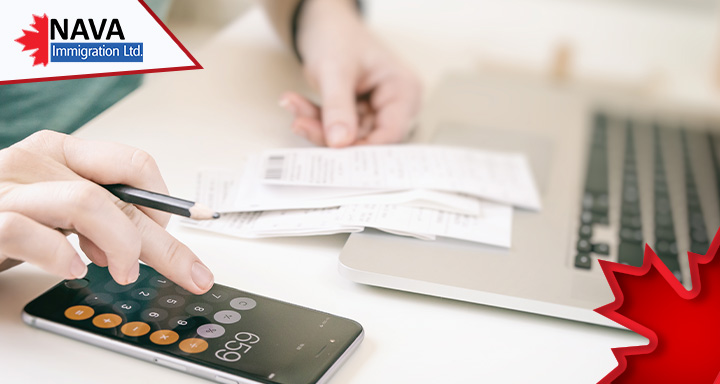Canadian Spending Trends on Goods & Services in 2021
Recently, Statistics Canada released a study on Canadian Spending Trends in 2021. It’s a yearly report that shows how much people in Canada spend on goods and services in 2021.
The study gives an overview of how people in Canada expend their money and what proportion of their earnings is distributed to different spending categories.
This report is helpful for new immigrants to Canada, particularly because this will help them understand consumer expenditure in Canada and estimate how much money they need to spend on their everyday needs upon settling in Canada.
Canadian Spending Trends in 2021 Compared to Previous Years
In 2021, the average spending on goods and services of Canadian people was $67,126, which was a notable decrease of 2.7 % from 2019. This was the first decline in consumer spending on Goods and services since 2010.
If the consumer inflation rate of 4.1% over the period of 2019 to 2021 is taken into account, the actual decrease in the average annual consumer spending is 6.5%. This signifies the overall decrease in the average spending of Canadian households.
The COVID-19 pandemic triggered the compaction in numerous spending categories within Canada’s households, which resulted in an overall decline in the utilization of goods and services in Canada from 2019 to 2021. Note that the findings of this survey may not accurately represent the current scenarios as certain spending categories, such as expenditures in transportation, might have returned to their usual patterns after undergoing unusual changes.
Similar to other years, the top three categories in terms of household spending in 2021 remained consistent. These top three spending categories were housing (31.4%), food (15.4%), and transport (15.0%).
Discover more about Canadian Spending Trends in 2021 and get insight into what spending patterns we can expect in the coming years. Here, all the amounts are represented in current Canadian Dollars and have not been modified for inflation.
A Look at how people spend their money in Canada
Get an overview of how Canadians spend on different notable spending categories, including housing, transportation, and food from restaurants in 2021. This section will explain the Canadian Spending Trends in 2021 in more detail.
Housing in Canada
In 2021, Canadian families spent an average of $21,106 on housing. This was a 4.5% rise from 2019. This increase in spending could be linked to higher housing prices, including rental and homeownership for both renters and mortgaged house owners.
Renters in Canada paid an average of $15,256 in 2021 for accommodation only, which is an increase of 5.9%. Rent accounted for the majority of the total expense, where the average rent payment was $13,060. This was a 6.8% rise from 2019.
Likewise, mortgage-holding homeowners in 2021 paid an average of $33,118 on accommodation, which was a 7.8% rise from 2019. The mortgage payments accounted for more than half of this total, representing a 9.1% increase from 2019.
The study also considered the related housing expenses, such as systems for communications and entertainment, including phone services, internet connections, and electronic devices, i.e., TV, Sound systems, etc. In 2021, the spending on communication increased to an average of $3,001 per individual in a family, which represents a 12.4% upsurge from 2019.
This increase was driven by higher spending on the following:
- Telephones and equipment: this accounted for a hike of 114.1% ;
- Internet services: this accounted for a hike of 21.7% ;
- Digital services: this accounted for a hike of 30.5%; and
- Postal, courier, delivery, and other communication services: These accounted for a hike of 68.7%.
Transportation Spending in Canada
In 2021, Canadian people spent an average of $10,099 on transportation.
This shows a decline of 20.7% in overall transportation expenditure made by them compared to 2019.
Private transportation costs, including taxis, Uber, etc., accounted for $9,501 of the total amount.
In 2021, the average amount spent on purchasing cars, vans, and trucks was $4,083, which is 16.7% less than the amount paid in 2019. In keeping with the average petrol price increase of 12.8% from 2019 to 2021, the average spending on petrol and other types of fuel was $2,080, which notably decreased by 14.1%.
Furthermore, the public transport spending also witnessed a drop. In 2021, the average spending of Canadians on public transport was $598, which was a 50% drop compared to 2019.
Spending on Restaurants Food and Recreational services
When studying Canadian spending trends in 2021, restaurants food, and recreational services are the third top categories.
In 2021, Canadian households spent an average of $4,223 on recreation services. This shows a drop of 8.7% compared to 2019. The causes of the drop were primarily because of the significant 55.0% decline in spending on recreational services such as sports, movie theatres, package trips, and performing art events.
As a result of the pandemic, in 2021, various restaurants shifted to delivery or takeout services or operated with reduced capacity. Due to this, the average Canadian spending on food from restaurants was reduced to $2,189, which reflects a 21.1% drop compared to 2019.
In addition, the spending on store-bought food experienced a positive change, reaching $8,065, which was a 7.0% rise in 2021.
Spending Variations in Canada (Province-wise)
Now that you have a broader overview of Canadian spending trends in 2021, here is a province-wise study.
In 2021, two Canadian provinces, including British Columbia and Alberta, witnessed the highest average spending on goods and services. The highest average spending of British Columbia was $75,028, and for Alberta it was $75,003.
On the contrary, New Brunswick and Quebec were discovered to have the lowest average spending in the same year. New Brunswick’s lowest average spending was $57,582, and for Quebec, it was $57,889.
Province-wise Housing Expenditure
In 2021, the highest average housing spending was witnessed in British Columbia and Ontario. For BC, it was $24,594, and for Ontario, it was $24,101.
Contrarily, the lowest average spending on housing was for New Brunswick ($14,685) and Newfoundland and Labrador ($14,736).
The study found that Canadians in Ontario dedicated the highest percentage of their income to housing, accounting for 34.6% of their overall expenditure, whereas people of Newfoundland and Labrador households had the lowest spending on housing, accounting for 24.4% of their total consumption.
Between 2019 and 2021, Prince Edward Island was found to be at the top among the provinces in terms of the most significant increase in average housing spending. This was an increase of 10.7% ahead of Ontario, which recorded a 7.8% increase.
Province-wise Transportation Expenditure
In 2021, the people of Manitoba and Alberta had the highest average transportation spending among all Canadian provinces. In particular, Manitoba stands at $11,230, whereas Alberta stands at $11,066.
The province of Quebec, on the contrary, was recorded to have the lowest spending on transportation, standing at $9,409.
This is mainly due to the fact that the households of Manitoba and Alberta spend a significant amount on private transportation, which is $10,798 and $10,438 for both provinces, respectively. Contrary to this, Quebec’s private transportation spending is $8,979.
In terms of public transportation, the households of British Columbia and Ontario recorded the highest average spending of $751 and $724, respectively. Contrary to this, the people of New Brunswick had the lowest average spending on public transport, which stands at $277.
What can be expected for future Canadian spending?
As it’s clear from the report, the COVID-19 pandemic has significantly influenced the findings of this survey; we can expect potential changes in future Canadian spending.
For instance, in 2021, the spending on transportation was significantly decreased, not only because of the fluctuating car market but also because of the lockdowns (due to COVID-19), which were partly effective across Canada.
The average cost of used cars in Canada has continued to rise, and the supply issues have affected the entire car industry, which has significantly contributed to lessening the expenditure on car-related expenses. However, as the lockdowns are lifted and increased people have returned to their workplaces, the spending on public transportation is expected to increase.
Also, the expected rise in petrol costs is likely to contribute to an increase in overall transportation spending in the future.
The reasons that are discussed above also apply to recreational services. As per this, a rise in the average spending on recreational services could also be expected. This is anticipated because the retail and tourism sectors, which have witnessed labor shortages during and after the pandemic, will gradually recover by hiring more workers as Canadians return to Physical, brick-and-mortar stores. Canadians are anticipated to spend more on recreational activities and services when these industries recover.
Among all spending categories, housing is the only category that has continuously increased since 2021. Canada has been experiencing a notable rise in housing costs, primarily resulting from the increased rent prices. As per the Statistics Canada report, the increasing housing costs is happening at a faster rate in three decades.
Additionally, these housing prices are expected to continue to rise slowly.
This is because the higher interest rates are significantly influencing homeownership with mortgages. With the rise in interest rates, the purchasing of houses could become less affordable, which in turn reduces the housing supply and increases the demand for rental properties. This will lead to increased rental costs.





